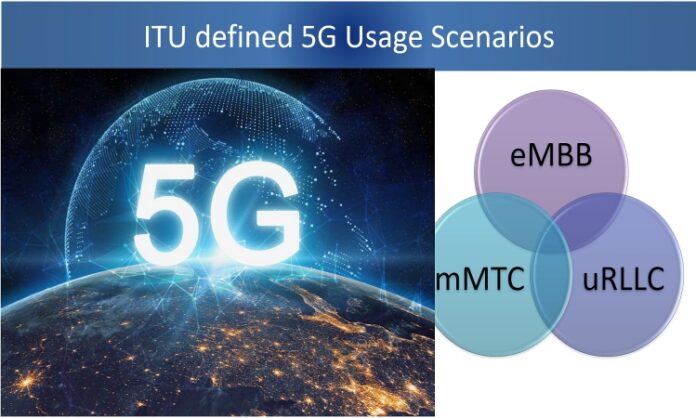New Delhi: Prime Minister Narendra Modi launched 5G Services in India on October 1 this year from India Mobile Congress 2022 (IMC 2022) held in Delhi. Subsequently, Bharti Airtel and Reliance Jio have announced availability of 5G services in few cities including Delhi, Mumbai, Varanasi and Bengaluru. All of us are thinking about what new features and benefits, 5G may bring for us. Is it just an upgrade from 4G services or something more! Let us understand the capabilities and use cases of 5G network better.
Usage Scenarios of 5G
International Telecommunication Union (ITU) sets the vision and requirement of upcoming mobile technology after consultation with its members which includes more that 190 countries, Industries, Academia etc. In respect of 5G, ITU had set the vision and requirement of 5G way back in year 2015.
Once vision and requirement of upcoming mobile technology is released by ITU, Standard Developing organizations (SDOs) like 3GPP, ETSI, TSDSI etc. start working on the candidate technology and its specification for the same. Out of all the SDOs, 3GPP has become de facto SDO for mobile technologies from 3G onwards.
Let us first talk about ITU vision of 5G and requirements. The ITU had identified three broad usage scenarios of 5G.
Also Read: India’s own 5G technology – 5Gi
Enhanced Mobile Broad Band (eMBB)
ITU had envisioned eMBB as one of the usage scenarios. The corresponding technical performance requirement of the 5G radio/Air Interface were defined in terms of peak data rate, spectral efficiency, user experience data rate and mobility.
Peak Data Rate
The requirement of peak data rate is set to 20Gbps for download and 10Gbps for upload. When we use YouTube or see Netflix we download. When we post our pictures or video on social media, we upload. This data rate is 20 times better than 4G.
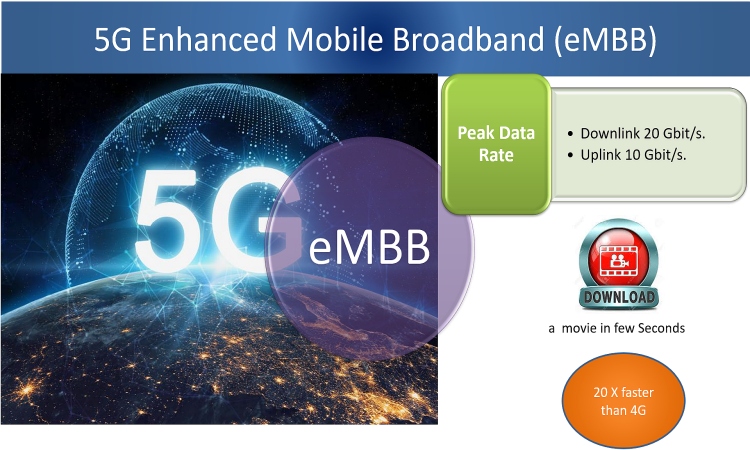
However, actual data rate, which we can use on 5G will depend on many factors like how many base trans-receiver stations (BTSs) are installed by telecom operator, how much spectrum/ frequency bandwidth is deployed, how many users are simultaneously using the network, usage pattern etc. We can expect that whatever our experience we have with 4G, it may improve upto 20 times better.
Also Read: Jio launches Beta version of True-5G in four major cities
Spectral Efficiency
The spectral efficiency is defined as data rate per Herz of frequency. ITU has set requirement of 30 bits per second per Herz of the frequency. What it means is that in case a mobile operator usage 100MHz of frequency bandwidth, the peak data rate can go upto 3000 bits per second (or 3Gbps).
Hence, to achieve a peak data rate of 20Gbps as envisioned by ITU, operators are required to deploy minimum of about 700MHz of frequency bandwidth. Prior to present spectrum auction, operators were India were having on an average 40 to 50 MHz of spectrum in each LSA.
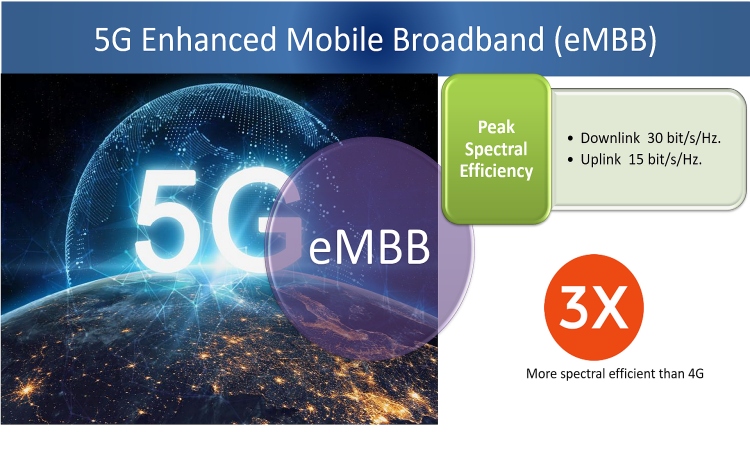
Hence, without more spectrum it was not possible to launch 5G Services. Now that all the operators have acquired sufficient spectrum, launch of 5G services in our country has become feasible and in fact commercial rollout has already started.
Also Read: Bharti Airtel launches 5G mobile service in eight leading cities
User Experience Data Rate
You might have experienced that when you are near to a mobile tower, you get good data rate and when you are away from nearest mobile tower, your data rate is low. ITU has envisioned that even if you are on edge of the network, you should at least get 100Mbps of data rate. This is kind of guaranteed data rate one should expect in a 5G.
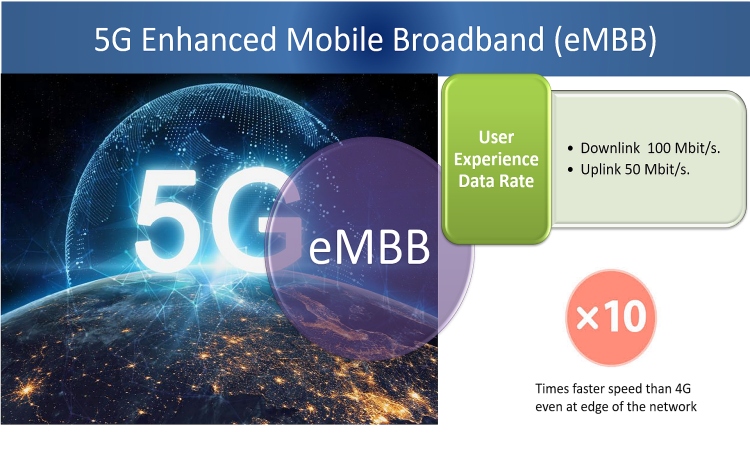
However, operators need to deploy sufficient number of tower, spectrum, backhaul etc., to meet the ITU requirement. It is 10 times better than 4G.
Also Read: PM launches 5G service; RIL plans ₹2 lakh Cr investment on infra
Mobility
We use our mobile when we are on move, and our mobile still works. In fact our mobile handover the call from one tower to other tower available in the route. This becomes very complex when speed of our movement goes higher as it has to handover the call to best tower on route very frequently without disturbing the call or data. 4G supports upto 350Km/Hour of speed, beyond which a 4G mobile will not work.
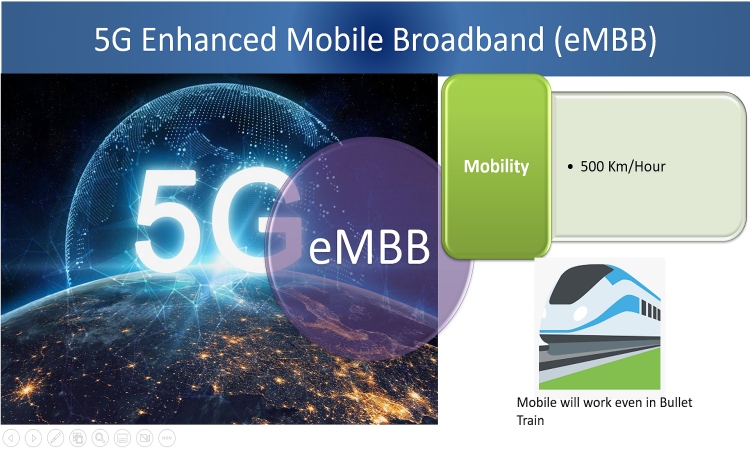
You might have heard about bullet trains being introduced in India very soon whose speed can go beyond 350 KM/Hour and then 4G phone will not work if you are onboard that train. In order to take care of this aspect, ITU has envisioned that 5G should work in moving train upto speed upto 500KM/Hour
Also Read: Post spectrum auction, Jio gets ready for 5G network rollout on desi tech
The eMBB will enable use cases such as Video Telepresence, TV broadcast directly on mobile, News Anchors using 5G phone for reporting instead of big satellite based system in vehicle, catering to requirement of data in a stadium wherein every one is using mobile data for sharing pic and video of ongoing match on social media, video streaming services, HD video conferencing, virtual reality, augmented reality and mix reality based services, video surveillance of cities and critical infrastructure and so on.
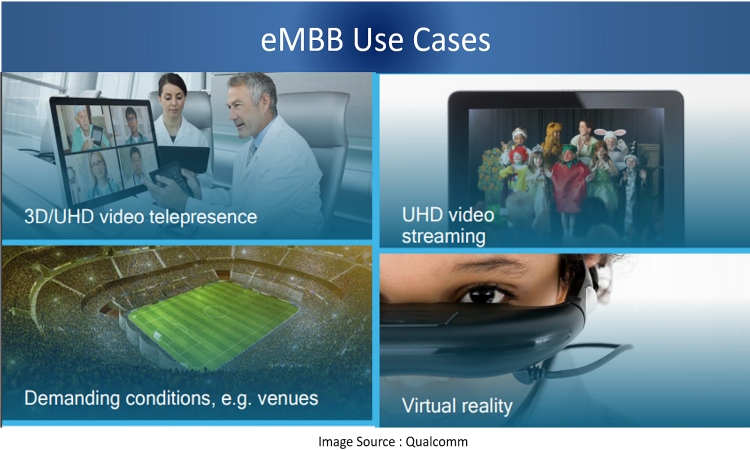
Ultra-Reliable Low Latency Communications (uRLLC)
The high data rate may not be good enough for many services. For example if there is delay in voice call, it is annoying. You might have noticed delay in conversation between TV reporters from field talking to TV anchor in studio.
This happens due delay in delivering the content from one end to another end. If a doctor is performing a surgery from remote location, such delay may be life threatening for the patient. If there is a self-driving car, any delay in communication may result into collision with other vehicles. In addition, availability of the network all the tie is also very important. This makes requirement of ultra-reliability and low latency communication very important of such applications.
Also Read: Telecom Engineering Centre ties up with pvt firm for 5G eco system testing
Latency
ITU has envisioned latency requirement of 1 millisecond for 5G. This means that certain amount of data will reach from one end to another end within 1 millisecond.
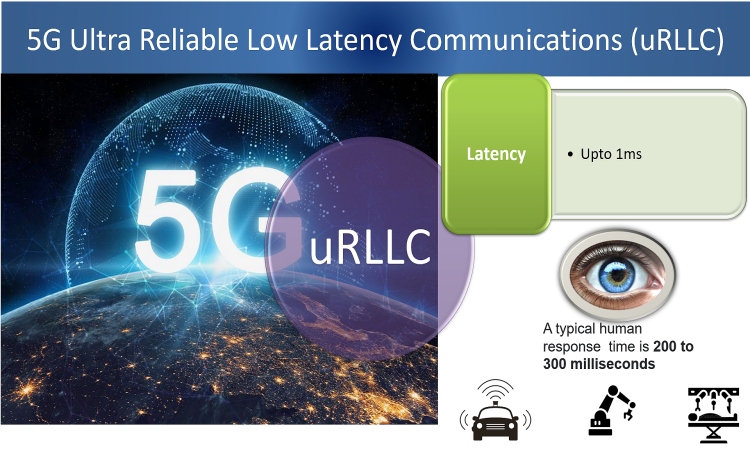 Let us compare it with response time of our eyes with 5G latency. When some throw any object towards our eye, our eye closes itself. Do you know how much it takes our eyes to react and close our eyes. It takes about 200 to 300 milliseconds. That means 5G latency is much superior to human eye.
Let us compare it with response time of our eyes with 5G latency. When some throw any object towards our eye, our eye closes itself. Do you know how much it takes our eyes to react and close our eyes. It takes about 200 to 300 milliseconds. That means 5G latency is much superior to human eye.
Reliability
Reliability of a network means that what is the error rate of data transmission from one one to another end. In 3GPP specification for 5G, for mission critical services like remote surgery, bit error rate defined is 10 to the power minus 6 that means one bit of error can be tolerated out of 10 lakh bits of data transmitted.

Some of the services which will use feature of uRLLC are remote surgery, robotics, autonomous cars, smart factories and so on.
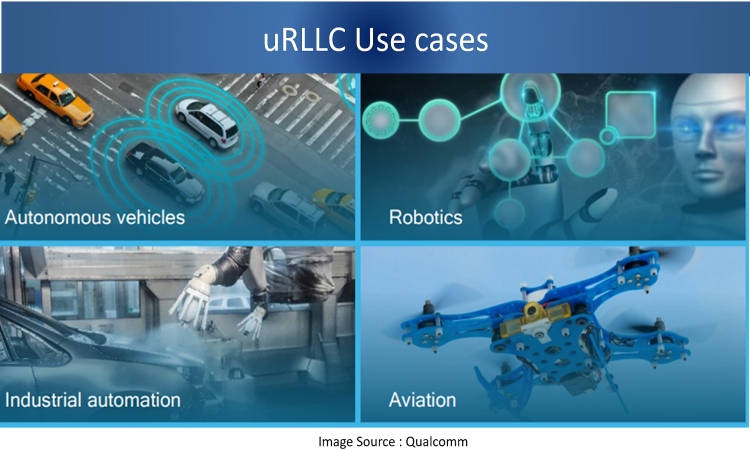
Massive Machine Type Communications (mMTC)
The mobile technologies like 2G, 3G and 4G were primarily designed for we human, however 5G is designed not only for human but also for machines, objects and things. Every object, machine or thing we see around us or used for different purpose will be connected on 5G network in coming purpose.
Also Read: DoT invites pvt firms apply for spectrum to run captive mobile network
This will enable many use cases of 5G in agriculture, industry, logistics and other sectors of economy. Massive no of IoT /sensors will connect to 5G network. Considering these ITU has envisioned to support large no of devices on 5G network and also energy efficiency of the network and end devices like IoT devices / sensors. These two key performance parameter of 5G are described below.
Connection Density
ITU has envisioned to support 10 lakh devices in one square kilometer area in 5G network. This will suffice for the dense network of IoT devices / sensors in smart cities and modern automated factories.
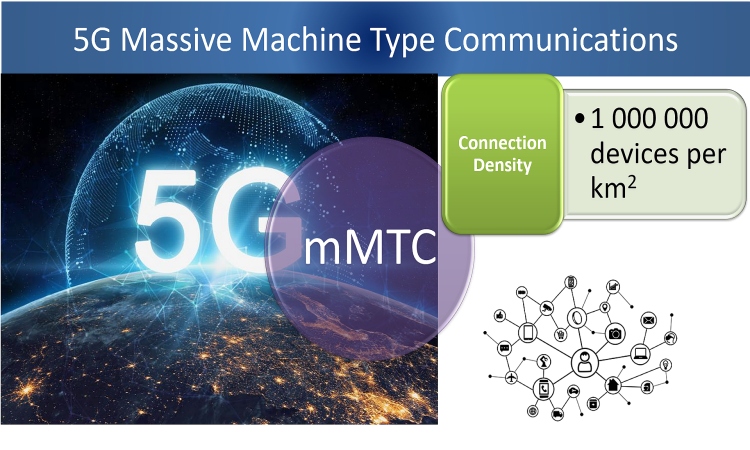 Energy Efficiency
Energy Efficiency
The IoT sensors connected on 5G for predicting disasters will be installed in remote and hilly area. They will operate using inbuilt battery as there may not be electricity in most cases. There will be no way one can recharge the battery or replace it.
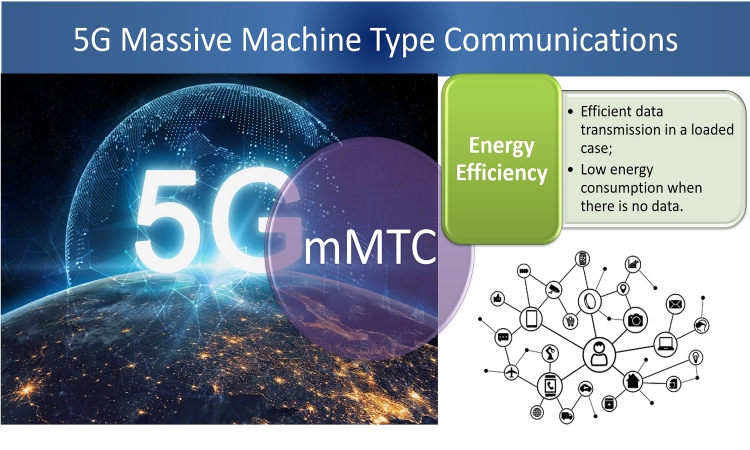
It is desirable that inbuilt batteries in the IoT Devices lasts for very long time, may be 10 years or 15 years. There may be similar requirement for sensors in agriculture field, deep sea applications etc. ITU has envisioned the 5G network has to be ultra energy efficient, 100 times more compared to 4G network. That’s why 5G is also considered to be green technology.
Also Read: BSNL revival package may delay launch of 4G mobile service
The possible use cases of mMTC will be smart cities, agriculture, smart home, personal wearables and so on.
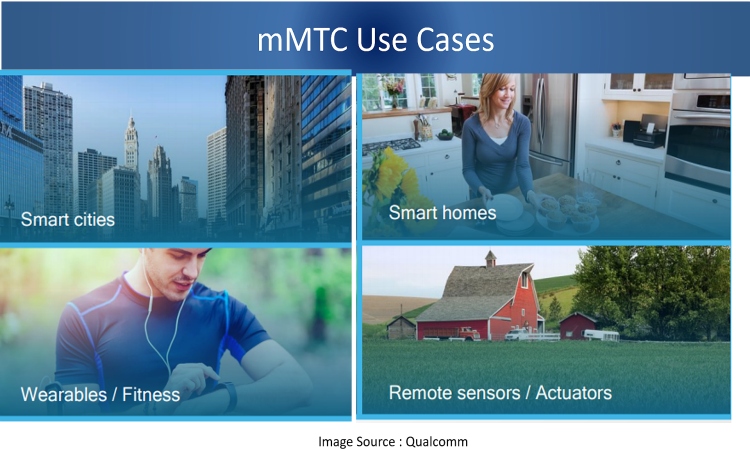
These capabilities may not be available from day one of the launch of the 5G Services. It will be slowly and progressively rolled out by the telecom service providers and may take to some time to use full potential of 5G. Initial rollout will mostly be focused on eMBB type use cases. Going forward, use cases of uRLLC and mMTC will be rolled out.
It is important for all the stake holders such as governments, industry and all other sectors of economy to collaborate among each other and develop 5G use cases in its respective area by closely working with TSPs, OEMs and innovators.
Ashok Kumar is Director (Wireless Access), National Telecommunications Institute for Policy Research, Innovations & Training (NTIPRIT), Department of Telecommunication (DoT), Ghaziabad

